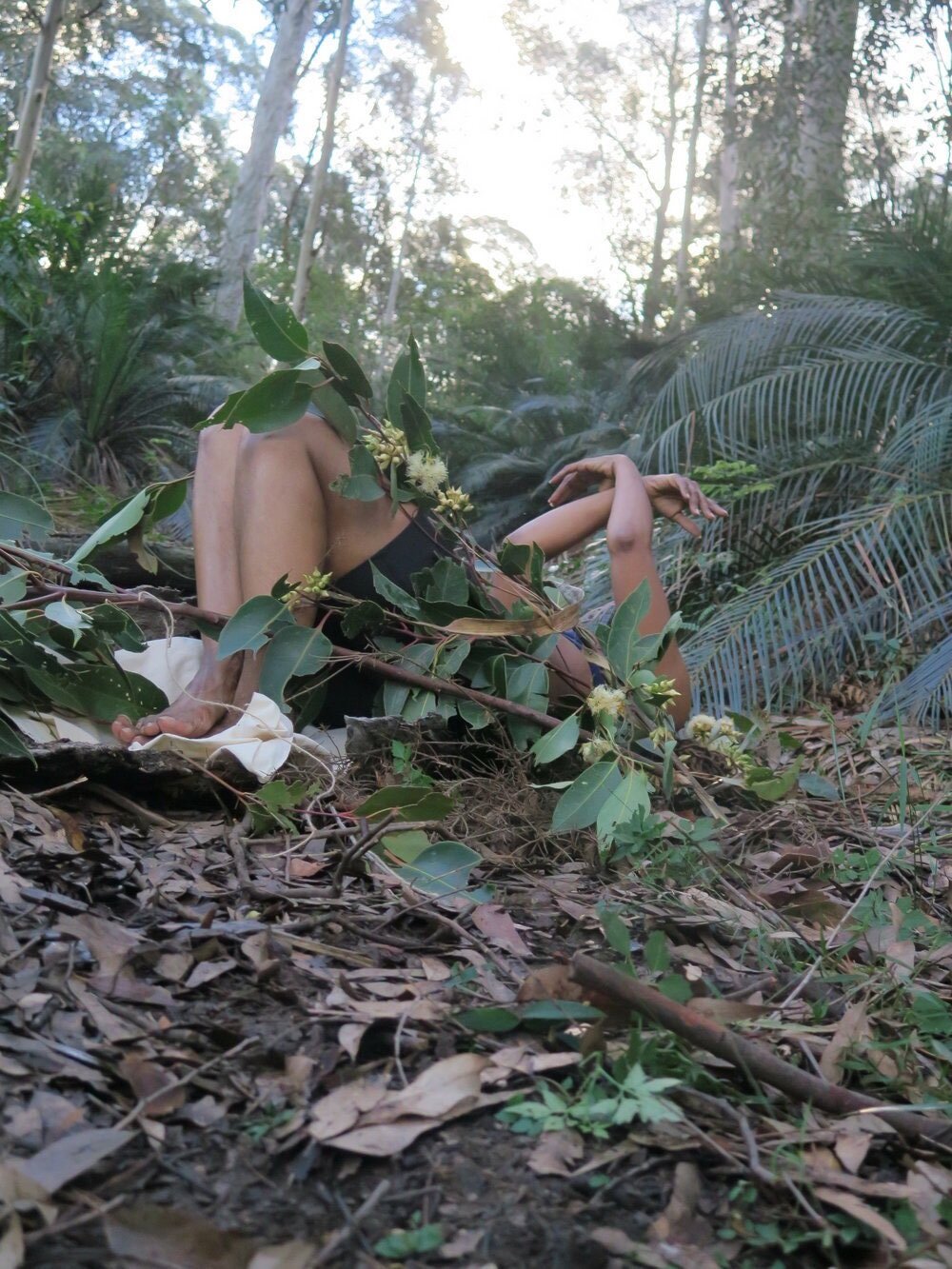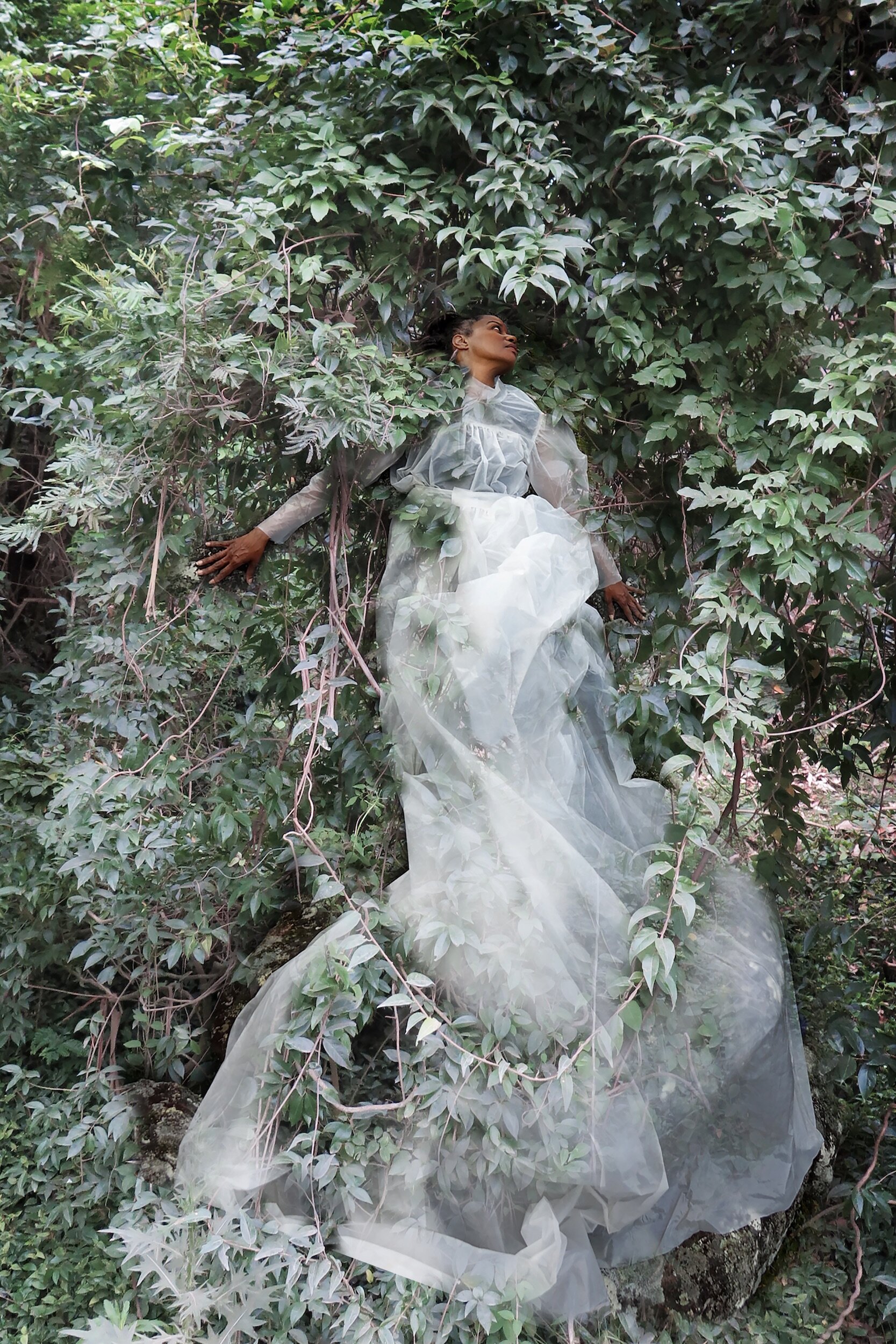THIS LAND IS…
Wayne State University
Detroit, MI
2019
Photos by Gina Kalabishis
THIS LAND IS… (October 25 - December 13, 2019) featured works created through a wide variety of disciplines by artists who address current and future environmental concerns. The artists confront political, cultural, and social ecological changes by observing sentimental landmarks and documenting their importance. This exhibition was curated by Jennifer Belair Sakarian and included works and live performance by Margaret Laurena Kemp.
In addition to a performance, Kemp exhibited two films: CITE and Surveillance.
This work is inspired by the land.
It is informed by the feelings of the African-American people who inhabit this land.
What we think about it.
How we engage with it.It is said that the land is part of us and we are part of the land. Throughout the histories and cultures of all peoples, humans have, since time immemorial, participated in experiencing the land with our hands, with our feet, with our bodies, and with our souls. Some treat the land in ways that are harmful and others in ways that have sought to sustain and nurture that which sustains and nurtures us. For many, it is sacred, symbolizing the very ground that our ancestors built, or walked, or tilled. In many ways, the earth is the most deeply personal of all the elements, rooted in spirit and ritual and revered universally for its tranquility and healing properties. It is the very foundation that we tread upon.
Performance
“Everyone is gathered at the foot of the winding staircase of the Elaine L. Jacob Galley, a part of Wayne State University in Detroit, MI. The windows are large—2 stories, omnipresent and face out towards Hancock Street in the center of midtown. The night crowd walks to their destination unaware of the vibrational pull happening in the gallery space.
Attendees are corralled as the lights begin to dim and the outside world’s reality is revealed as we all wait. Inaudible sounds make their way down the stairs and capture everyone’s attention. Anticipation is heavy on this fall night. No cell phones are out, no lights shining in the faces of the spectators. Just craned necks looking up—as if looking hard enough will reveal something. And eventually it does. Hard repetitive crunches start to add to the cacophony of sound. Steps. She is coming down the stairs. Her descent at a glacial and calculated pace captures our attention. We only hear the crunch of the plastic antebellum dress as it fills the corridor of the stairs and watch the vibrations of her hand-crafted parasol that rattles and shakes as she is possessed by the ancestral spirits. Somehow she still moves with grace and calculation. Her eyes unmoved as if there is everyone and no one there at all. The dim glow of the lights captures the heavy weight of her extended self like glacial forms that have emerged from the depths of the ocean. A weight she is willing to investigate.
Audible words make room during her final descent—carefully crafted sound sourced from the great Poet, Essayist and Wayne State Alumni Robert Hayden. His poem “Middle Passage,” written in the 1940’s about the slave trade route is entwined with an interview where he speaks of his Detroit. Hayden, a native of Detroit born in 1913, was the first African American Poet Laureate of the United States. He is quoted in saying there was “very little interest in the subject matter.” One wonders how much has changed in 2019?
His voice echoes soft and clear as she makes her way down the stars.
Sails, Flashing to the wind like weapons…
She continues her descent shaken and unshaken all the same, her umbrella rattles with cotton and seeds. An armature of protection—a false sense of security.
She confronts you as she approaches the ground level. She is no longer a spirit but one walking, living and breathing amongst us. Hayden’s voice quiets as her voice erupts, a gamut of emotion, cathartic and waiting to be exposed.
Middle Passage:
Voyage through death
To life upon these shores.
“10 April 1800—
Black rebellious. Crew uneasy. Our linguist says
Their moaning is a prayer for death,
Ours and their own…”
Moans bellow and audible words continue to erupt from her small frame. You lose track if she is speaking or if Hayden has come back in to interject.
Her eyes full of emotion—as if she had absorbed it all from everyone that is and ever was. The collective pain hiding in the seams of her dress, filling its 15-foot-long train. With soft eyes, she casts it back onto you—not forcefully but with the acknowledgement that this pain is real and that it is still here—Detroit 2019, “America, land of the free.” She moves through the crowd; her dress interrupts your space as you are not sure if you should move back or stand still. It wraps around the attendees creating a river of light on the vinyl floor. Her eyes meet yours and she hands you a packet of seeds. Silence. You accept her offer.
Black gold, black ivory, black seed…
Margaret Laurena Kemp’s performance left the space in complete silence after her departure. Not for a second but many heart beats. Watery eyed and with a confidence unmatched, she left the space and her dress as a relic. As a reminder, not as a memento mori, but saying “this is still a problem, and this is your problem too.”
Everyone took in air. Margaret was ethereal and her movements everlasting. Thoughtfully and through heavy research and rehearsal she brings her vision to life, weaving together a story from past, present and future lives. Her work is about racial injustices and not all the same. She doesn’t want to tell only an African American story but a human story, in hopes that we can bring a little more humanity back into our world. ”
Films
Margaret Laurena Kemp’s CITE utilizes film editing techniques that articulate her uneasy relationship to the natural world. Six hundred still images of her dancing Black feet transcend time, melding the past with both the present and the future, and position historic and present fear alongside the pervasive jubilation of Black folks. Focusing on the natural world and the Black body—the feet, in particular— Kemp conjures a kaleidoscopic musing on movement and a body’s various physical states of being: Breathing. Dancing. Loitering. Longing. Laughing. The artist plays with the perception of the human form and how that perception shifts depending on the introduction of rhythmic motion and the body’s physical presence in nature.
CITE features images, all photographed outdoors, that hearken back to the canon of historical paintings by classical artists in which horizons are shown with the intent to celebrate dominance and ownership of bodies and land. When the Black body is introduced within this context, as with these images of brown feet upon the brown ground, that dialogue is artfully disrupted and upended.
The second installation in the exhibition is the experimental film, Surveillance, in which Kemp scrutinizes the physical and psychic safety of African American women from both a historical and a contemporary perspective. Created from footage submitted by viewers of the artist’s previous durational performance at Montalvo Arts Center, the film, in long, quiet and often slow-moving frames, teases out the idea of repetition and endurance and the joy that is needed to not only survive but thrive against seemingly insurmountable odds.
The title of the exhibition seems to draw on the many facets of the word “surveillance.” As a noun, it reflects the artist’s (the subject of the film) objectification and exemplifies the voyeurism of the audience. As an action, it calls on important contexts, historical and political, embodying the word’s most literal sense by overlaying ghost images of “coding” sourced from FBI surveillance of African American communities.
These eerily translucent images, produced by Abram Stern for his Unburning series, are culled from a collection of FBI aerial surveillance images of the Baltimore Uprising in 2015. The inclusion of this footage, together with the film’s beautiful and brutal ambiguity, asks open-ended questions about the role of digital media in reproducing a criminalizing and deeply racialized gaze. It calls into question the impact on humanity when ghostly traces of injustice remain even when video evidence is removed, redacted, or even forgotten. The overlays represent the reality that these images, "burned into" the video by the FBI's infrared sensors, have also been burned into the psyche of the viewing participant and society at large.
Joy. And “the unburning.” These are the ties that bind CITE and Surveillance. The desire to “unburn” negative images of African-Americans in the minds of many. And an ode to joy; a showcase of the resilience and the fortitude that it takes to be Black and jubilant and free. Kemp approaches this work with a deliberate and critical eye, with skillfully dichotomous methods that can be—depending on your perspective—either sympathetic or fierce, intimate or detached. The exhibition interrogates objectification and observation and personifies the spirit of joy and the land to offer a robust portrayal of people, time, and place that is sensitive and beautiful, timely and necessary.


